On Christmas morning 25th December, I was expecting a lot of crowd at ARAI Hill or Vetal Tekdi. Of course, it did not disappoint. But, despite a lot of people somehow I had a gut feeling that I might see a lot of birds. Especially some new birds which I never saw before. This might sound a bit exaggerated but, it was such a nice morning that, I just felt good about this trip.
I took my Honda Dio at 7 AM because, in winter time the sun rises late and because of the trees, terrain and the quarry the sunlight reaches later in some of the birding patches. There were many people, especially school and college kids along with their parents near the Hanuman Temple. Some were doing exercises, some were chatting and some came with their cameras. Unfortunately, I did not sight anything in particular at the entry of the path like the last visit.
The moment I entered the quarry A Green Sandpiper welcomed me. I could capture very hazy pics of them around a pond. Just for reader’s information. The ponds are formed because of this quarry. I think because of these artificially created ponds many water birds and other kinds of birds enjoy staying near the ARAI Hill of Vetal Tekdi.
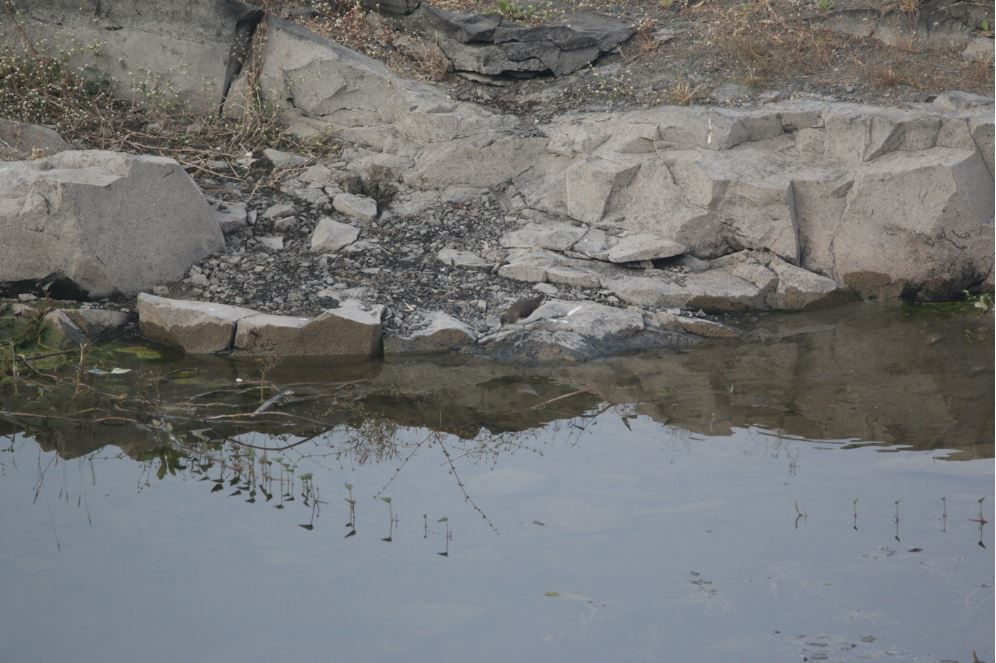
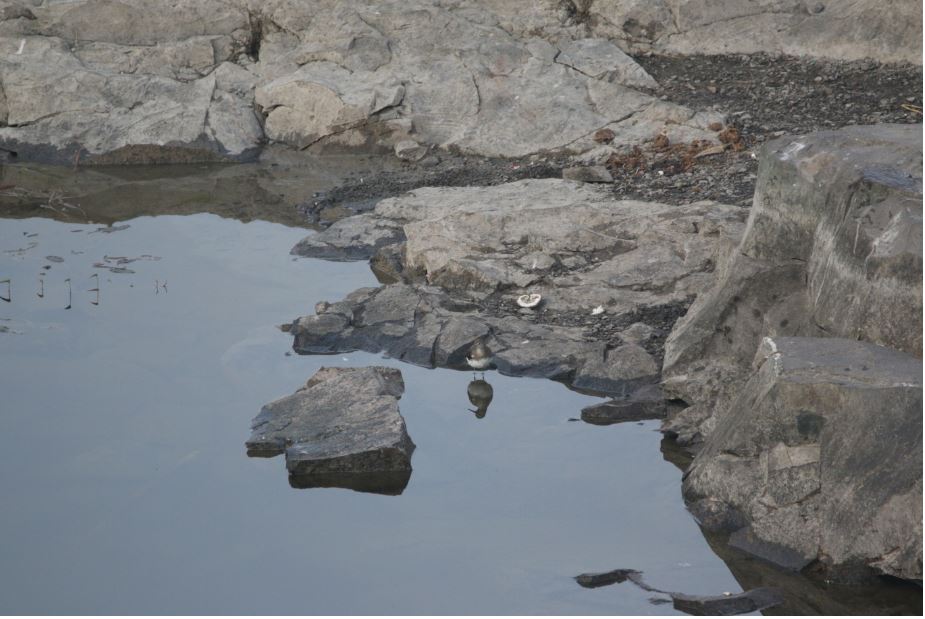
Although Green Sandpiper was not such a great beginning, ARAI Hill or Vetal Tekdi slowly started opening up its treasure. Because, after getting a couple of pictures of Sandpiper, I looked on my right. A brownish bluish lump on top of the tree caught my attention. Guess what! it was a Purple Heron. It was my first time to sight a purple heron at ARAI Hill.
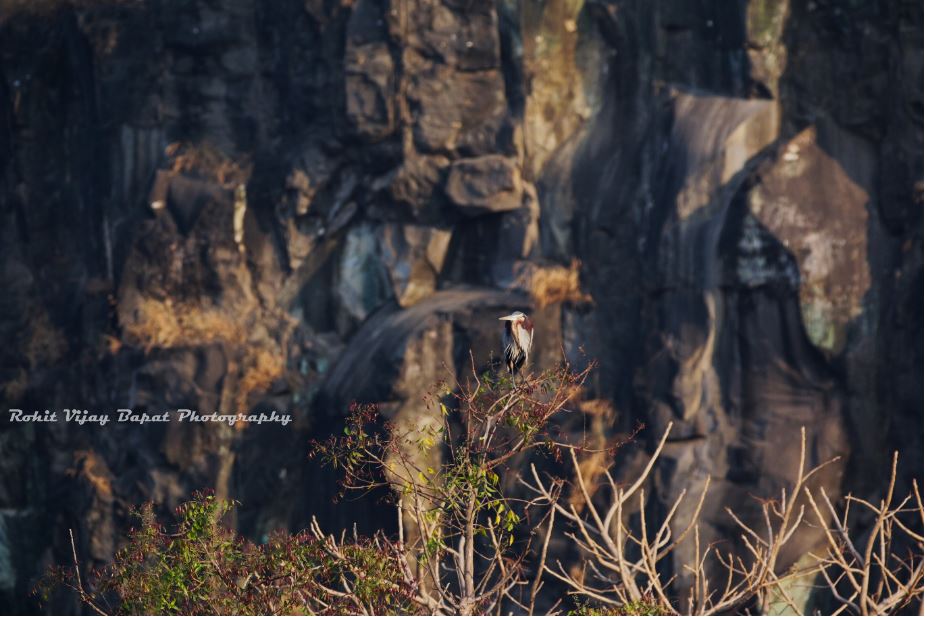
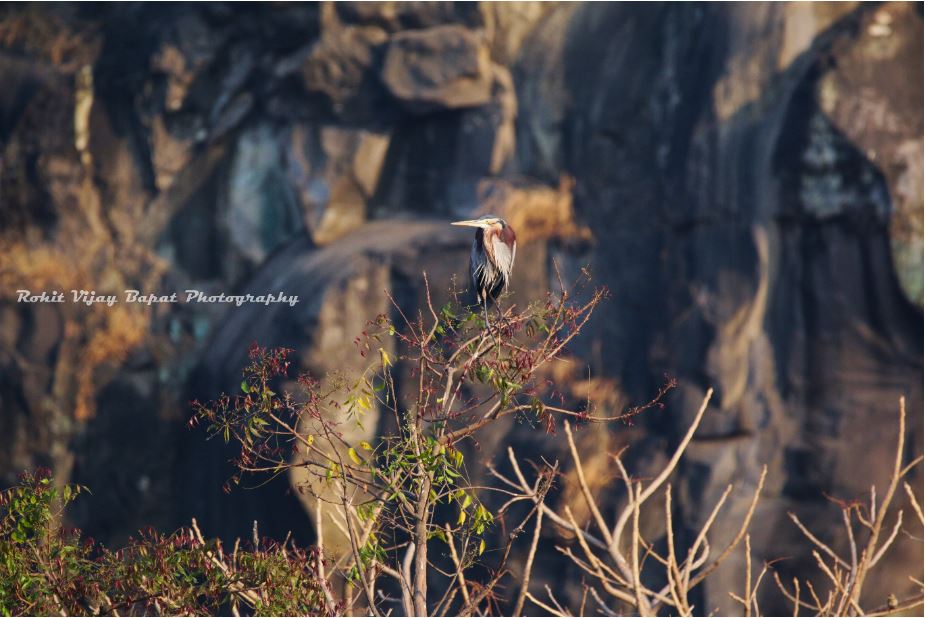
If you have a sharp eye ( 😉 ) you can find a Pipit at the right bottom corner of the image above which is out of focus. Anyways…
It was a very calm heron who held its wings closer probably due to cold breeze. Now, immediately after taking photos of this Purple Heron, I gazed over the smaller pond near the bottom of the tree. I felt some movement in the water and the grass. It was a Water Hen. It’s called White Breasted Waterhen. It’s an extremely common yet elusive water bird. Very easy to identify due to the white breast and belly.
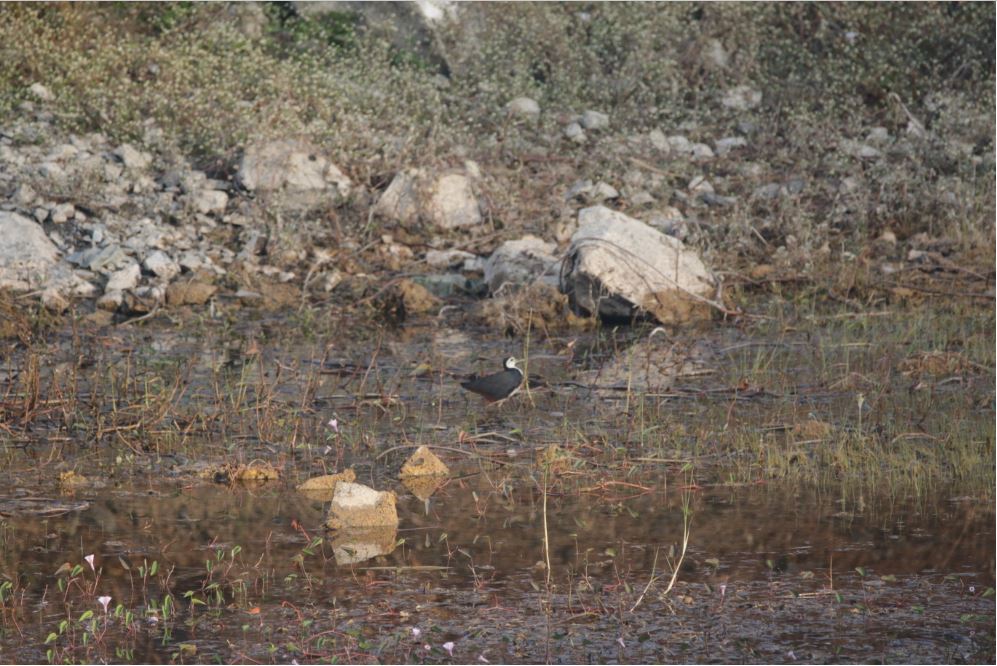
I was happy to see these three kinds of birds near the entrance. I started walking down toward the bottom of the quarry. Because it is just the end of December there was much water in the ponds. There are two trees with fallen leaves at the end of the dirt road entry of the quarry. Nearby, I saw another small and cute bird called Grey Necked Bunting on the rocks near the ponds. Grey Necked Bunting is sometimes known as Grey Hooded Bunting. This bird migrates to Southern India from Central Asia region in winters.
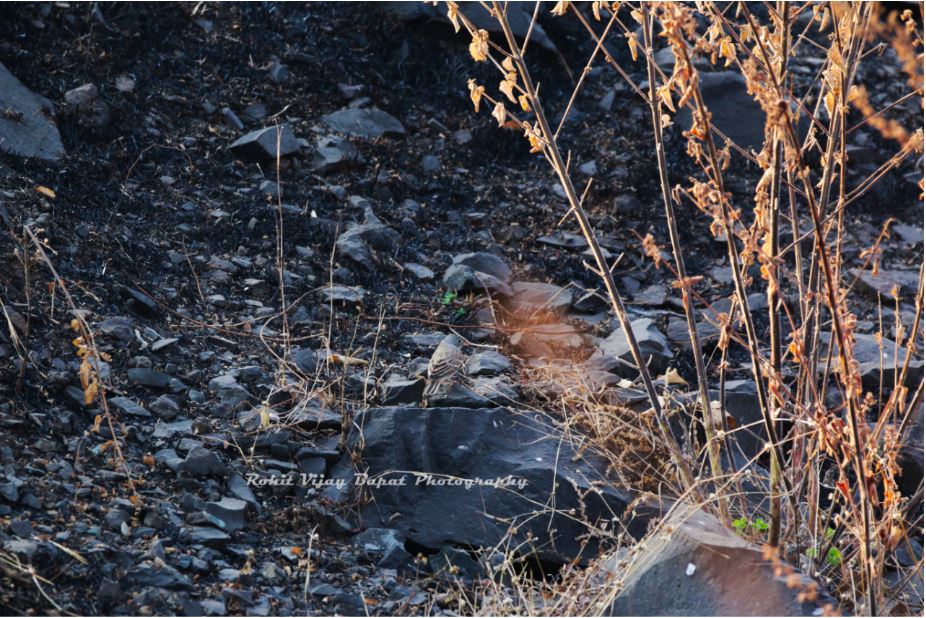
I kept walking toward the inner pond. The whole terrain seemed like a marshland. Tall and thick grass, marshy ground and there was a peculiar odor that comes from the marsh. The sun was up and it gave many small birds energy to fly. On a dried branch of a marsh bush, I saw a daring female Common Stonechat or Eurasian Stonechat. She was not afraid of the camera and kept giving poses. Eurasian stonechats are migratory birds who come in the Indian subcontinent during the winter season.
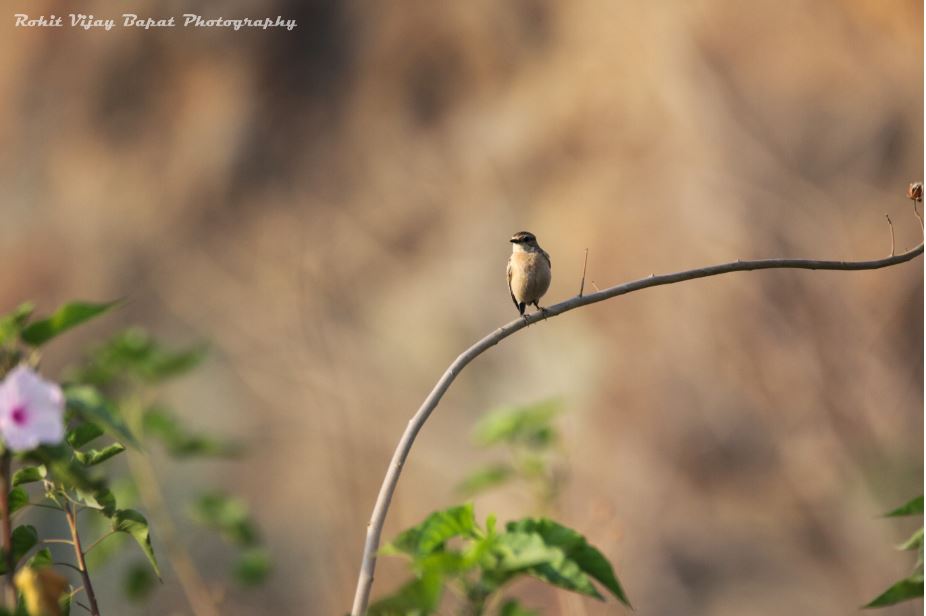
I went a couple of steps closer without making noise. But, a Green Bee-eater distracted me for a second and I took a quick snap of it. The shades of green colors of this little fellow were looking brighter and sharper in sunlight falling straight on it.
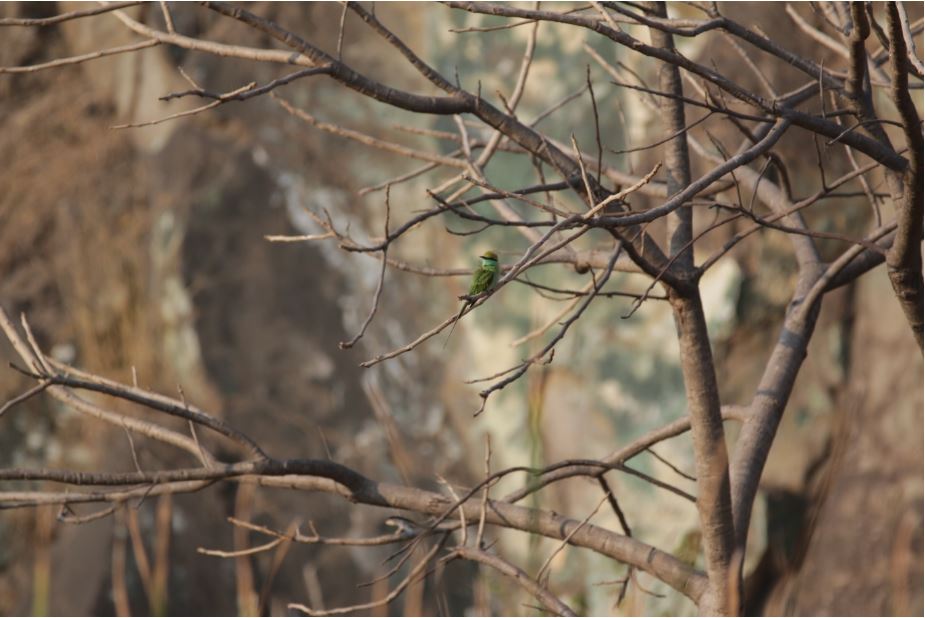
After this short distraction, I re-concentrated on Stonechat. She had moved a bit and turned her back towards me. I was a little bit disappointed initially but, then she looked back and gave some nice poses!
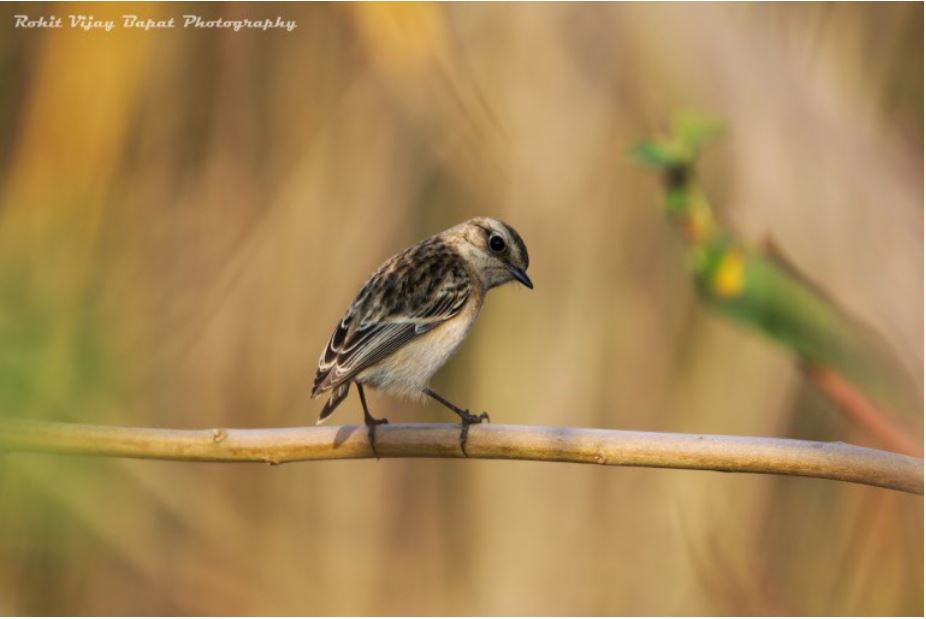
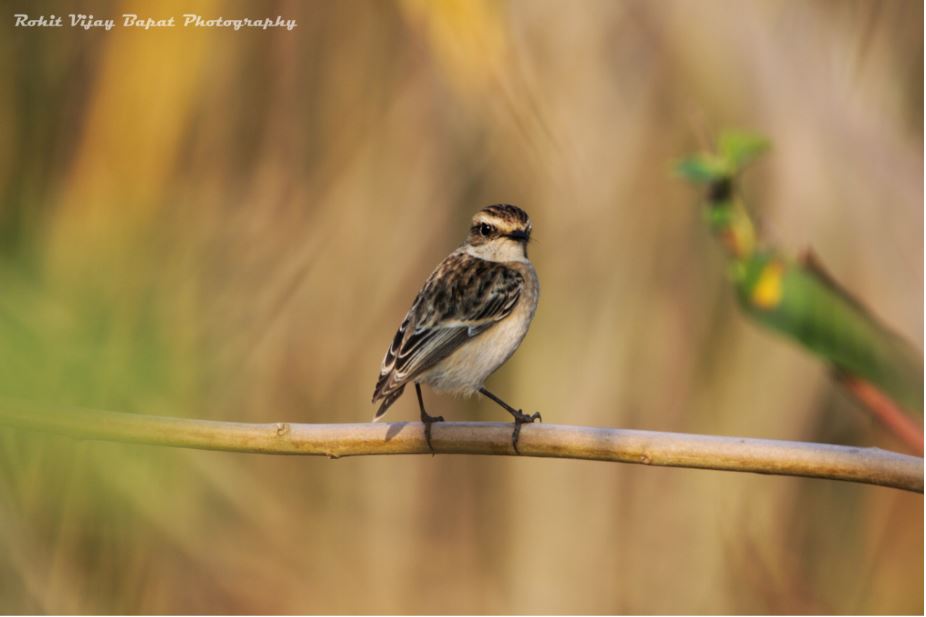
When I was done taking some nice photos of this stonechat I looked up towards the southern ridge of the quarry. A White Throated Kingfisher was standing on the rock, looking over the southern pond. Not only it is a very common bird but also the photo is not really great due to a very long distance. But, I think a kingfisher on a stone ridge is still interesting!
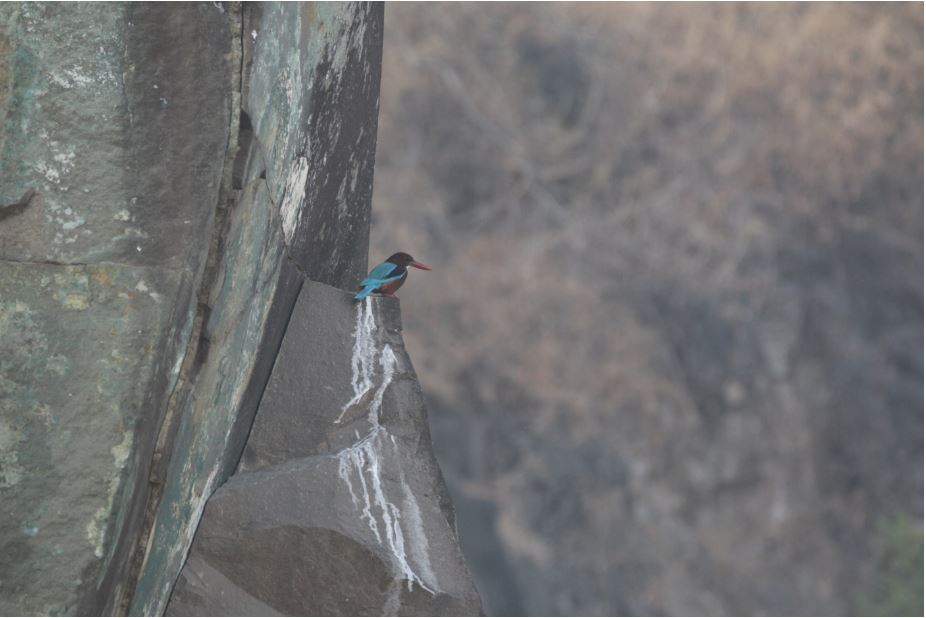
By this time I thought the stonechat must have gone away, but, guess what she was still around and gave a last good pose for photography. Sometimes I wonder if birds are aware of photography and know how to look at the camera 🙂
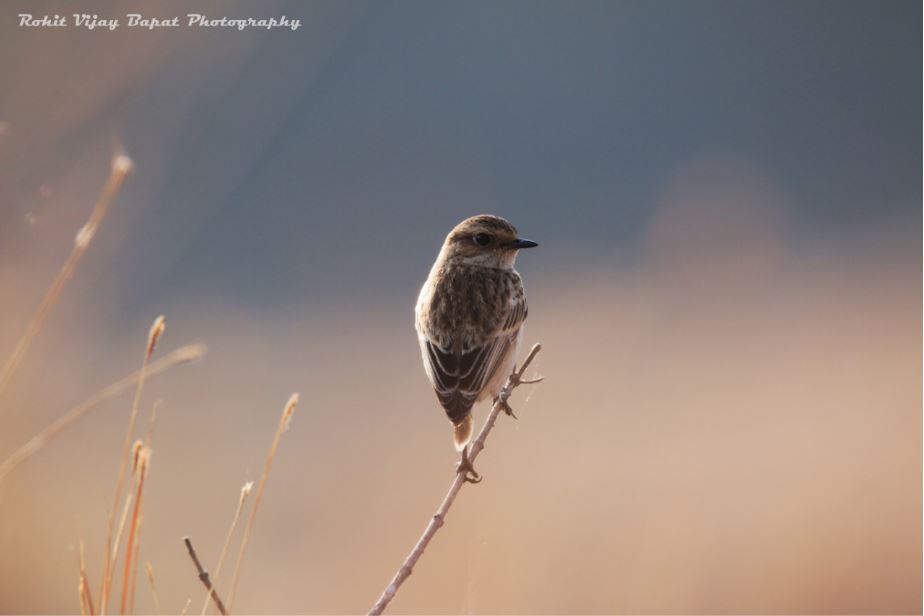
I left her alone after a minute and continued towards the southern ponds. I heard a lot of chirping but, did not see anything in particular. Just a couple of usual suspects like Long Tailed Shrike and a Green bee-eater couple.
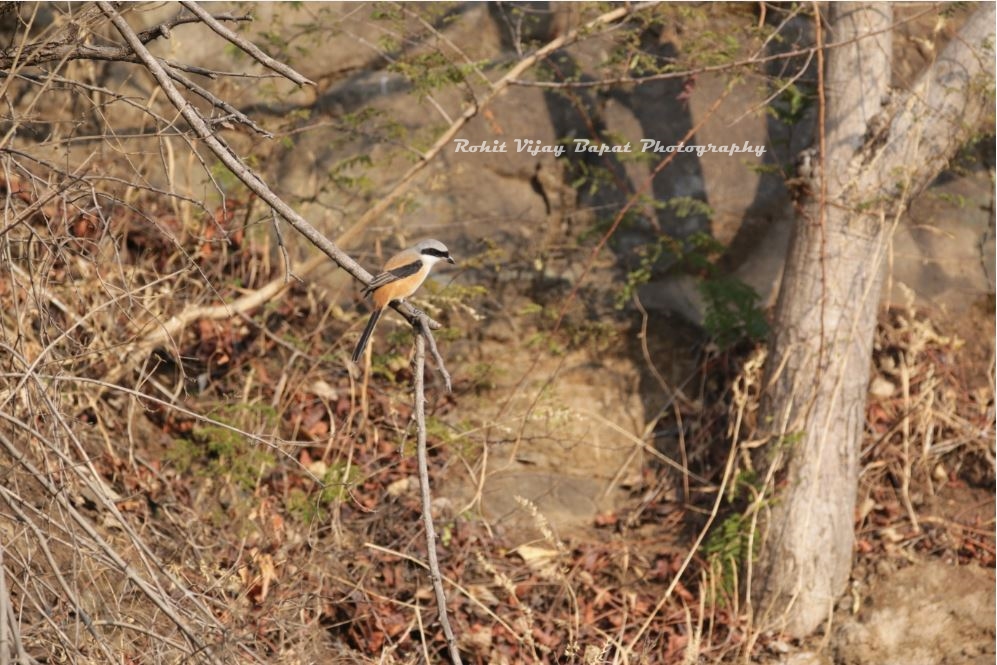
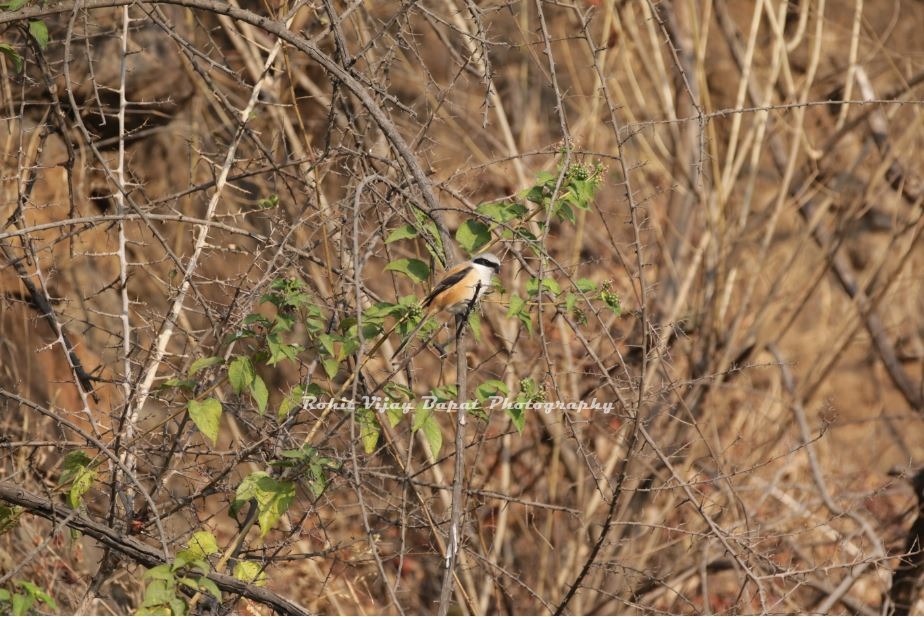
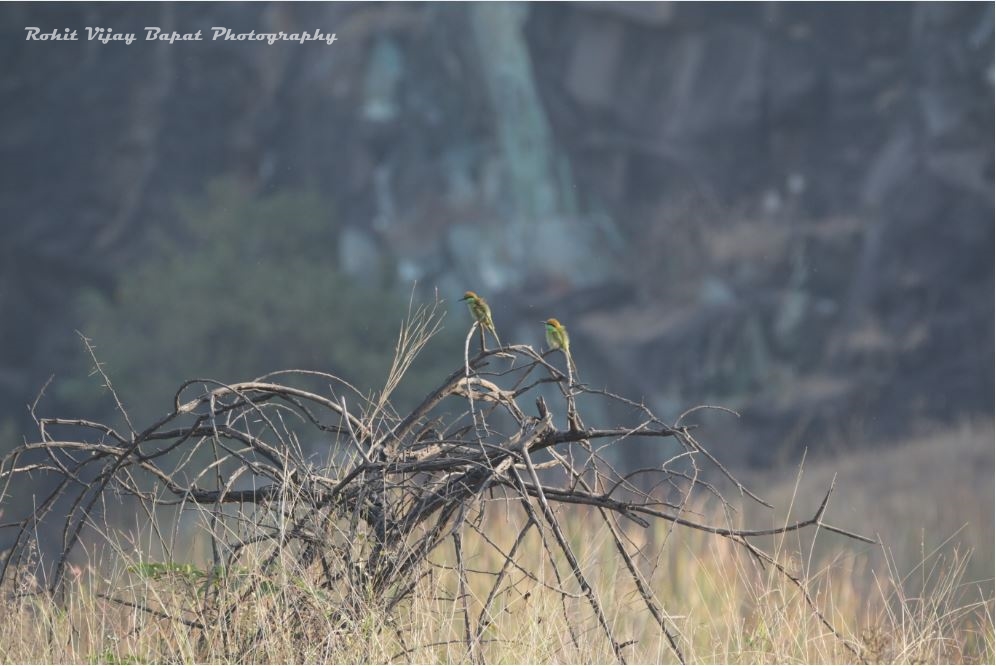
Seeing no activity nearby, I turned around and started walking towards the northern side of the quarry. Like I mentioned earlier I had a gut feeling that I am going to find something I have never seen before. ARAI Hill did not disappoint. I was able to capture a photo of a Syke’s Warbler. It was earlier considered a subspecies of Booted warbler but, a separate species nowadays. I spotted it for the first time. Also, it took a while to identify it correctly.
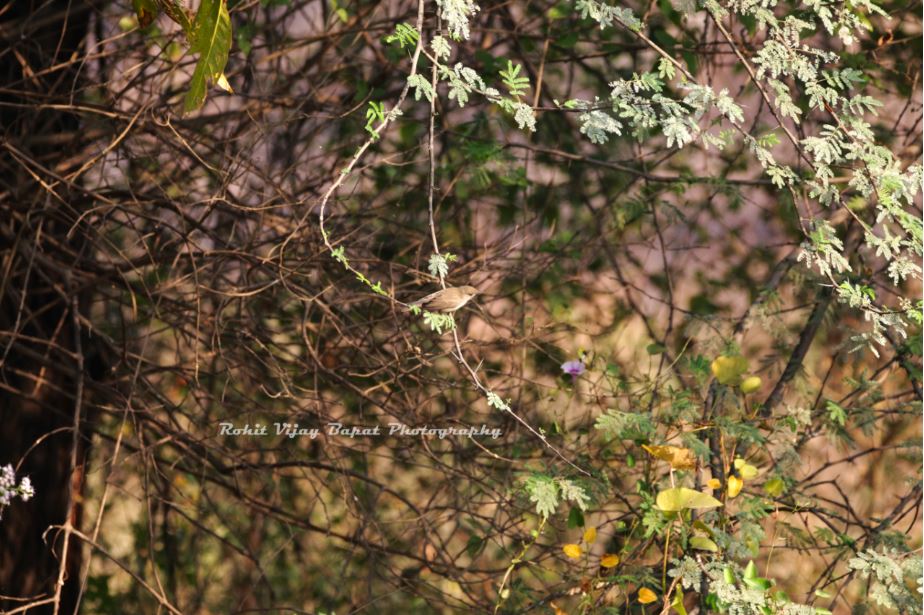
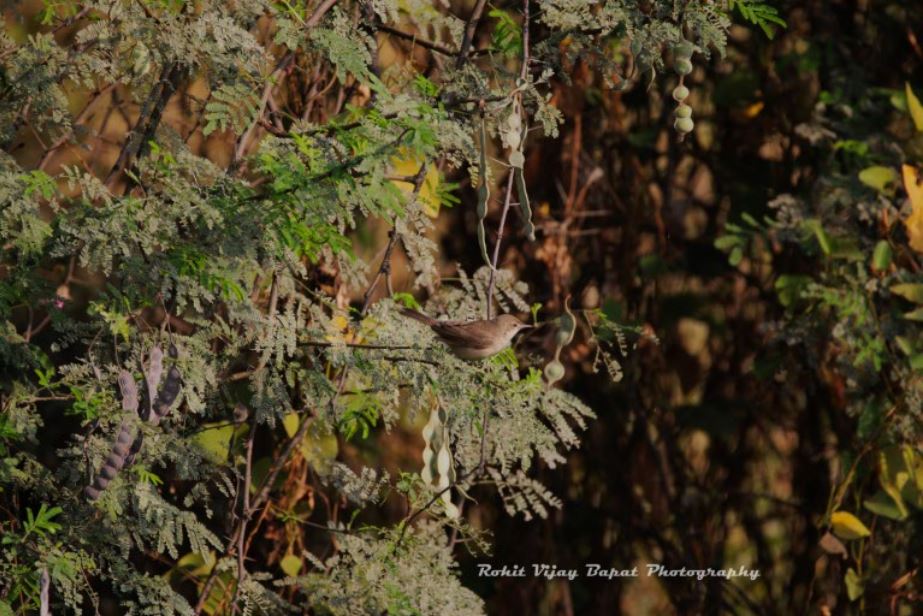
I kept walking. It was around 9:30 AM by this time and I could feel the heat. I put on my hat. Also, the people who came for exercise began going back. So, the quarry area was a bit deserted at this time. Only a few bird watchers and photographers were around. I was clicking some common birds like Laughing Dove and Long Tailed Shrike (probably the same one I spotted earlier)
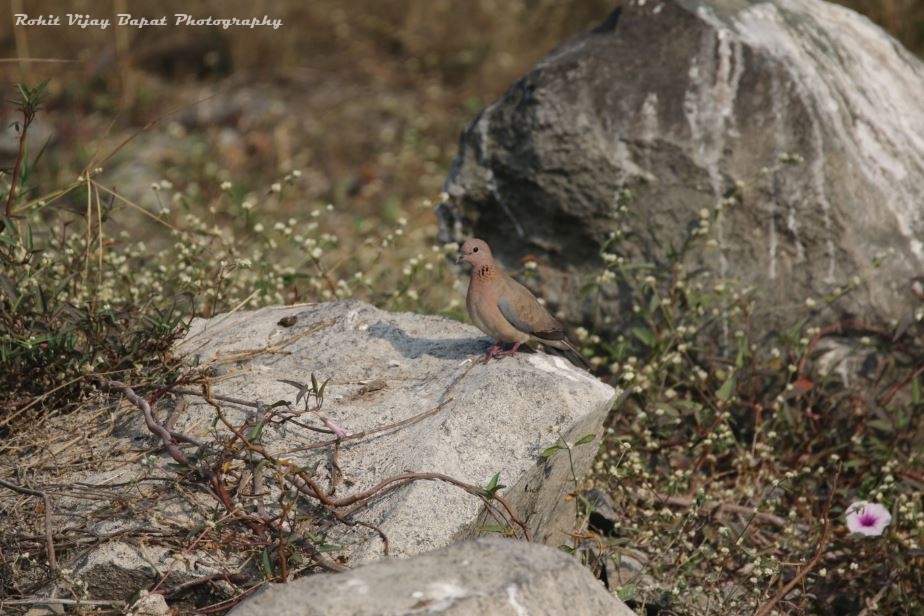
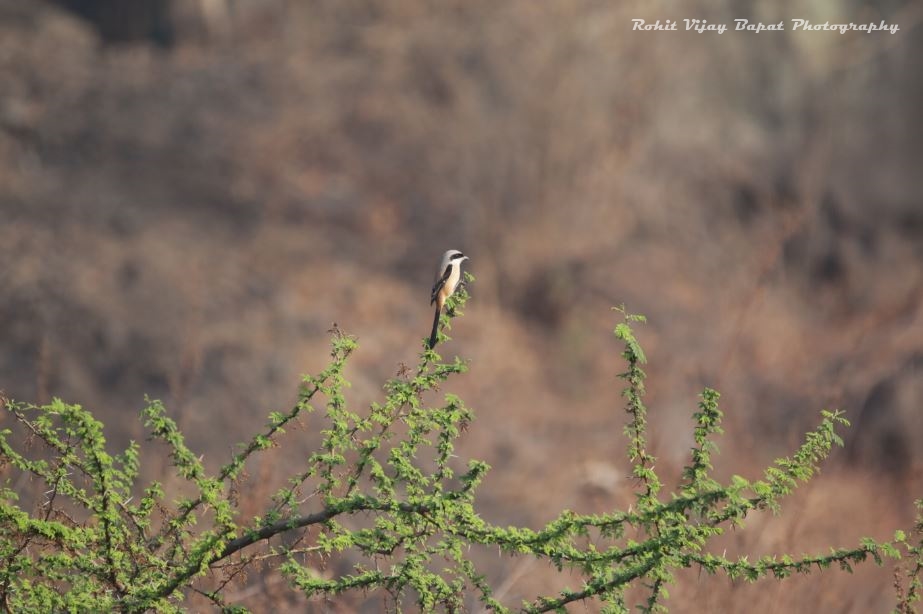
And then a Green Sandpiper stopped on a rock across the pond. Honestly, I felt gratitude towards the ponds that they are giving means of survival to so many birds, insects, and animals. Green Sandpiper can be identified particularly by greenish legs, the white underbelly pattern, shorter tail and also pattern on the back.
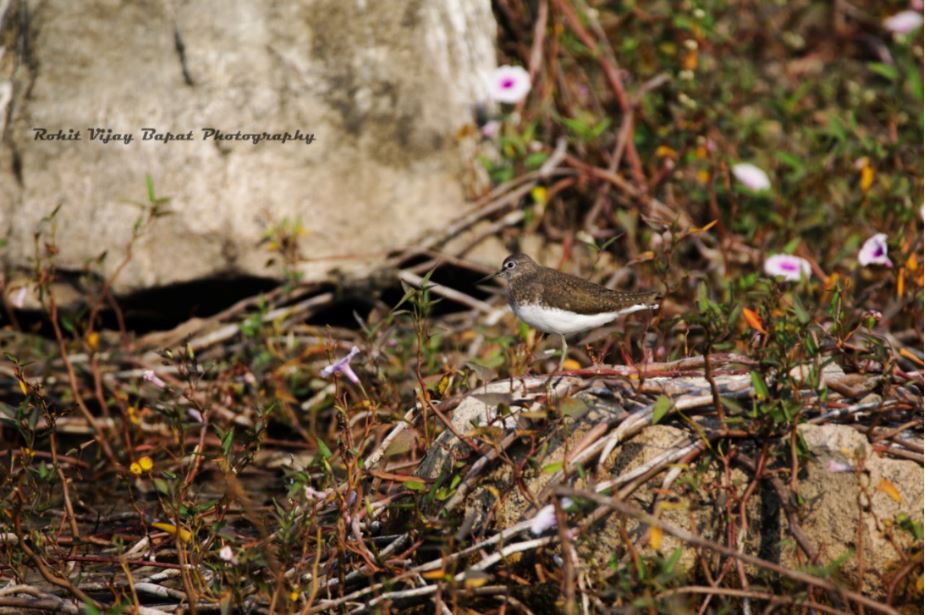
A couple of Green Bee-eaters were catching insects in the pond. I saw green bee-eaters diving into the water to collect the food for the first time. It was a surprise for me. It may not be for others but, a bird which usually flies to catch an insect was diving into the water like any other water bird catching a fish.
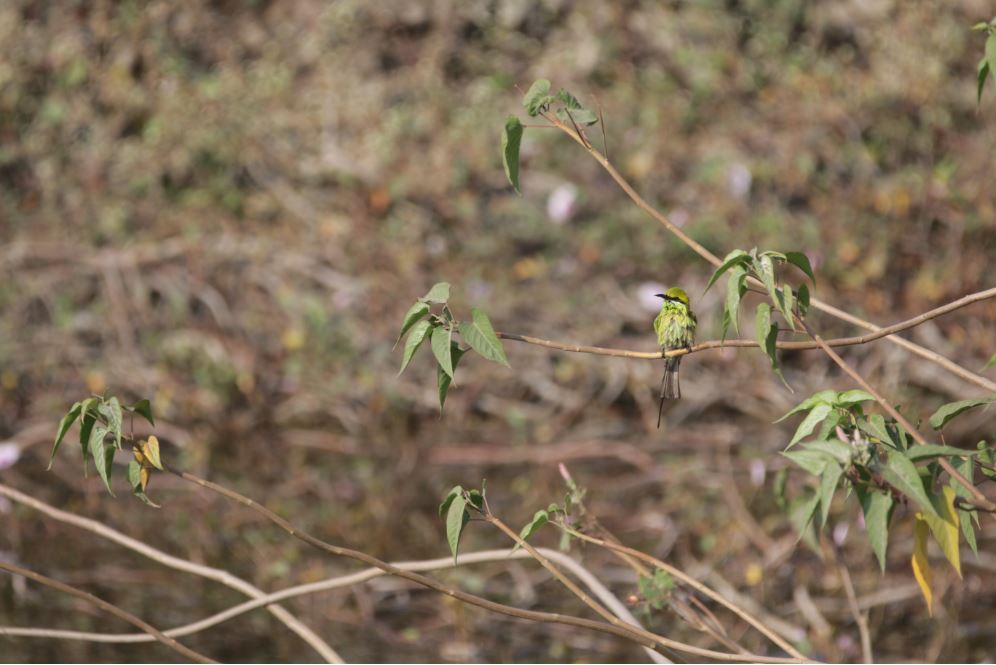
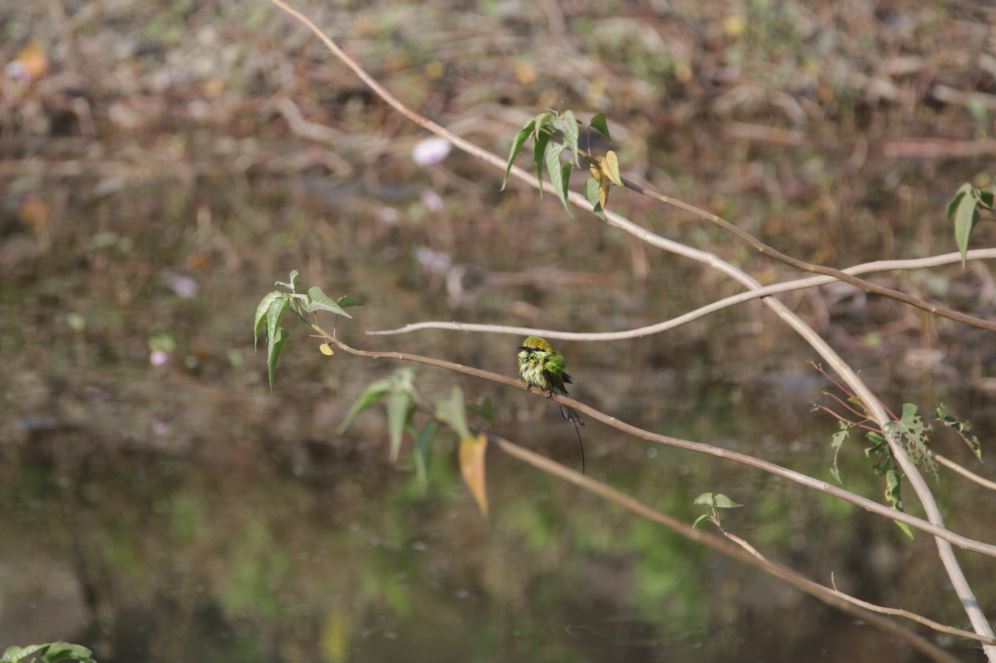
It was now around 10 AM and thoughts of returning back started popping up in my mind. But, like any other enthusiastic and optimistic bird photographer, I decided to wait for that one last precious minute which might give you the best chance. It’s always this last minute that holds bird photographers in particular and wildlife photographers in general back into the field for hours. As there was no hurry to go back home I decided to stay for one last minute. On the shore of a pond on the eastern side, I saw some movement. I was a little bit tired by this time so it took me some seconds more to aim correctly. It was a Red Headed Bunting female. It was fighting with Bulbul or I should say Bulbul actually was trying to chase her away from that tree. Red Headed Bunting, is a migratory bird which breeds primarily in Central Asia and migrates to Indian Subcontinent in the winters.
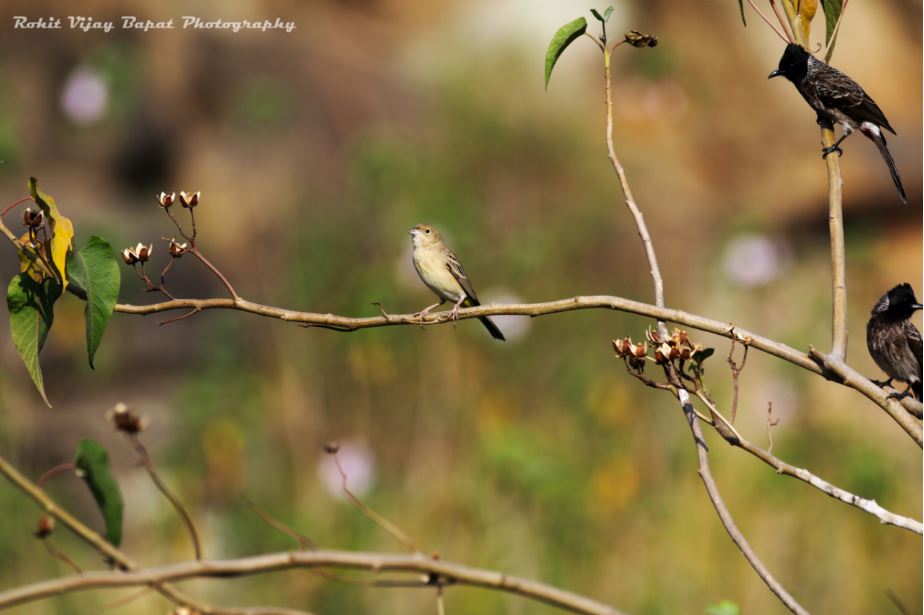
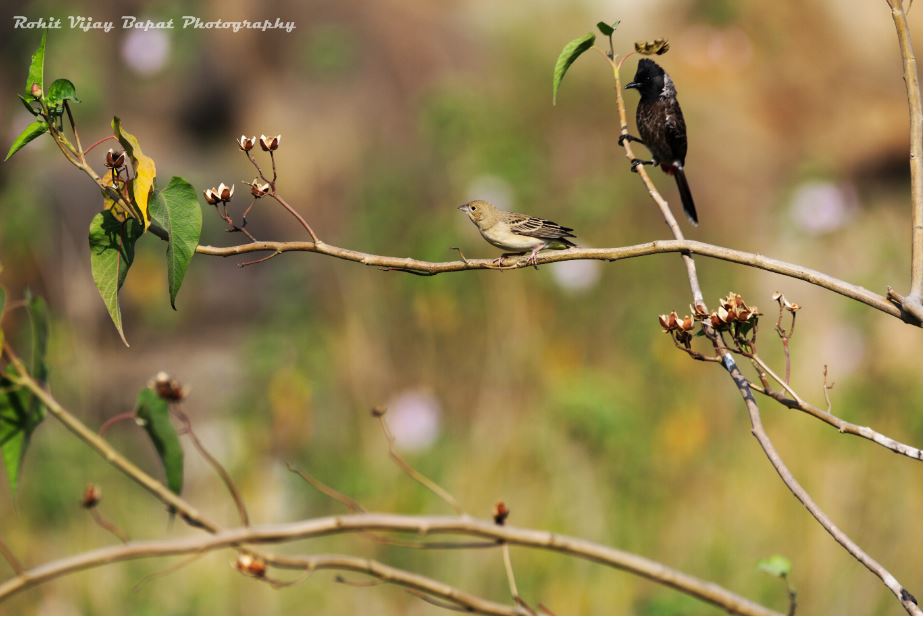
It was indeed a day of spotting many birds. I was seeing a new bird every time I was getting done with the first. As soon as I was done with taking pictures of this bunting, near the bigger pond at the center of the quarry I spotted a kind of lark called Ashy Crowned Sparrow Lark. It is a lark or a kind of sparrow which lives in the grassy region and can survive in very tough weather conditions. The one I saw was a male Ashy Crowned Sparrow Lark. It is kind of easier to identify this lark because of the black band around the eyes. It looks always angry because of this band 🙂
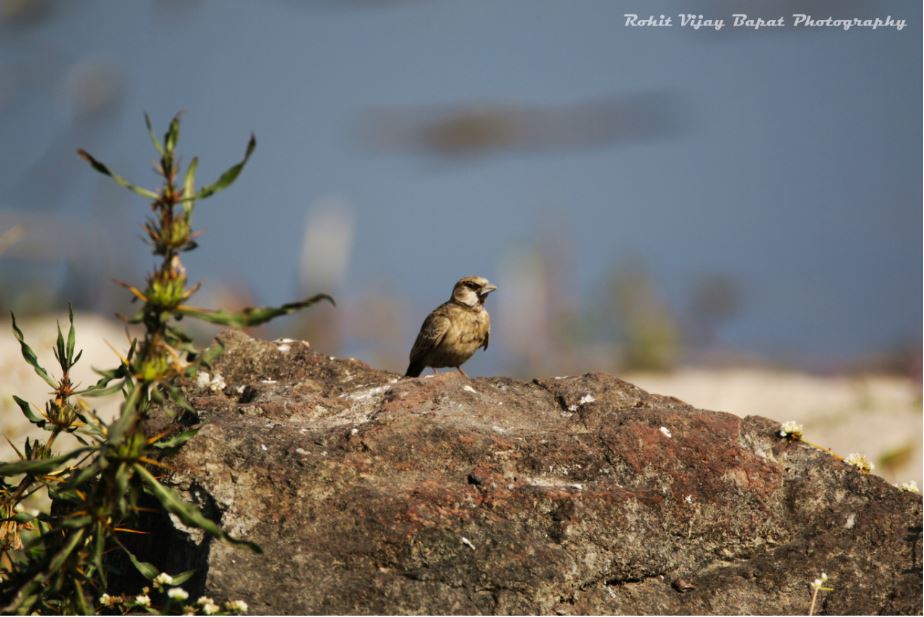
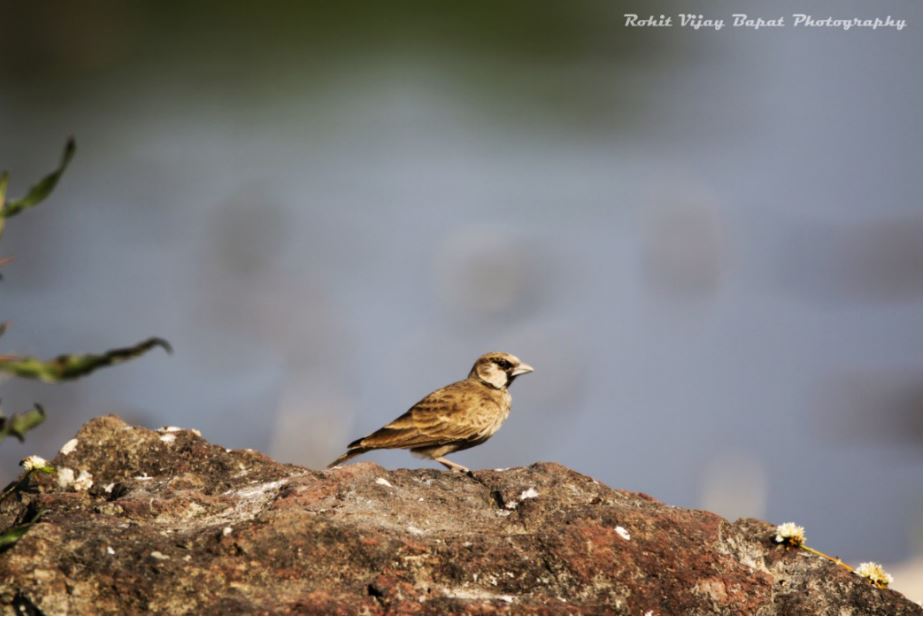
At this moment I decided to sit down. Luckily in a minute, a Black Kite came around. It started doing rounds above my head. Initially, I thought this is just a normal survey for food. But, astonishingly it landed exactly on the opposite of the pond. ARAI Hill or Vetal Tekdi, seriously doesn’t stop surprising. The kite landed at the shore of the pond and started drinking the water. Again, it was my first time to see a kite drinking water so close.
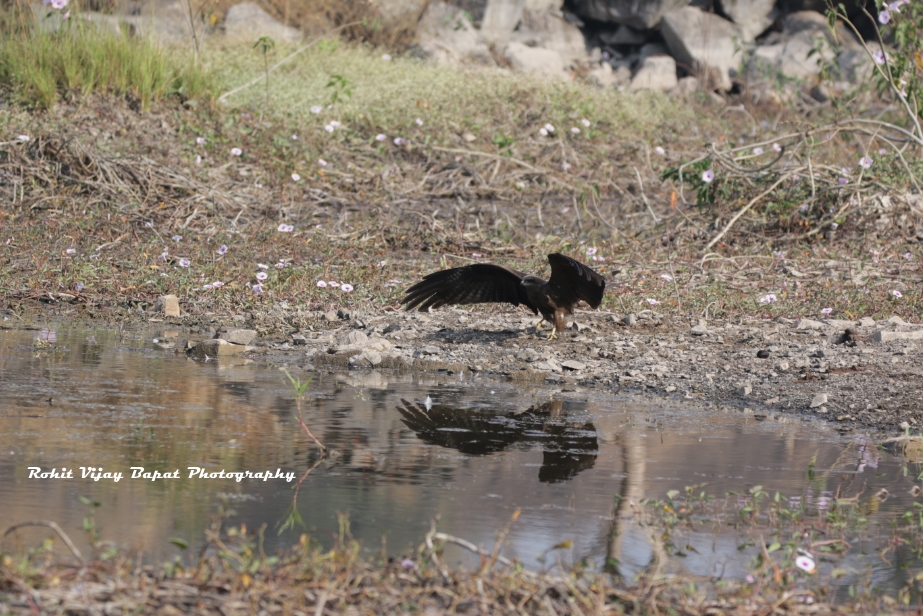
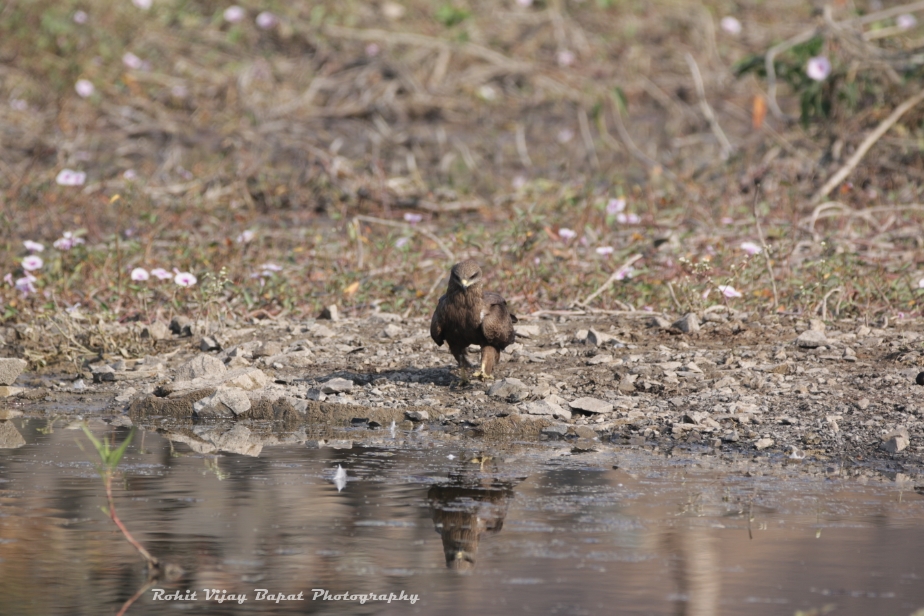
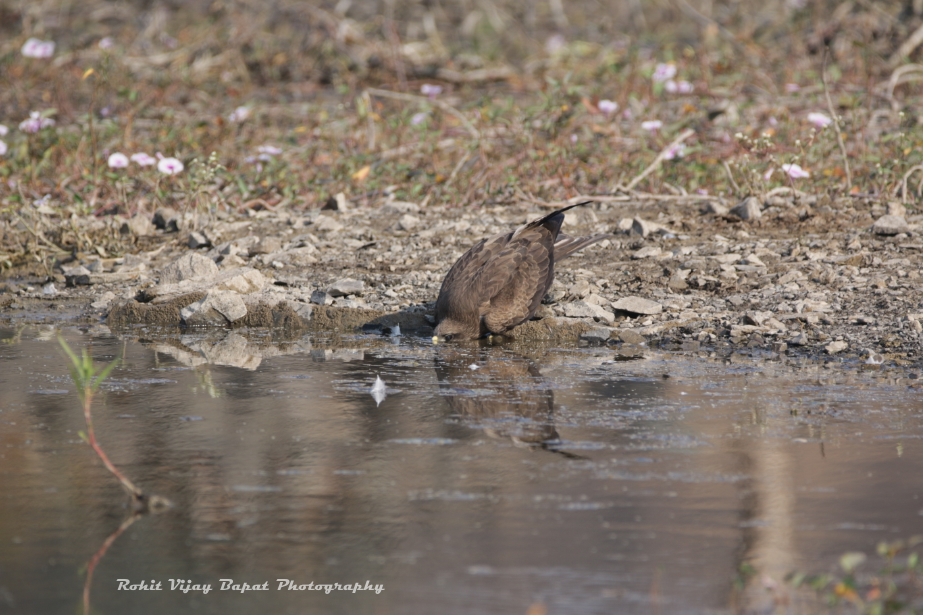
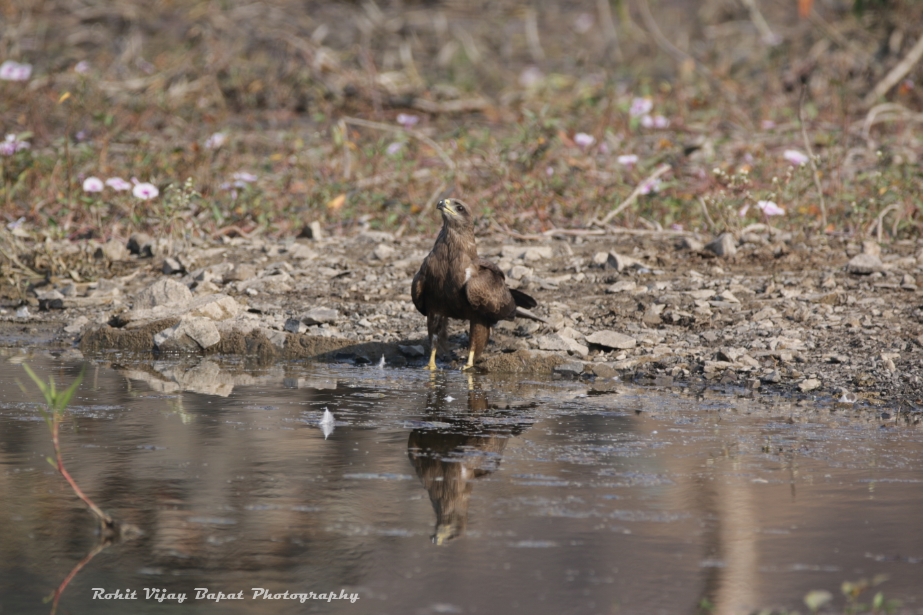
But, ARAI Hill was not done yet! I sat there for some more time and I watched something again which I never saw before. I saw a male and female Green Sandpipers busy in lovemaking. It was an interesting display. I placed myself behind a bigger rock so that, I don’t disturb them. I took some photos but then I decided to shoot a video.
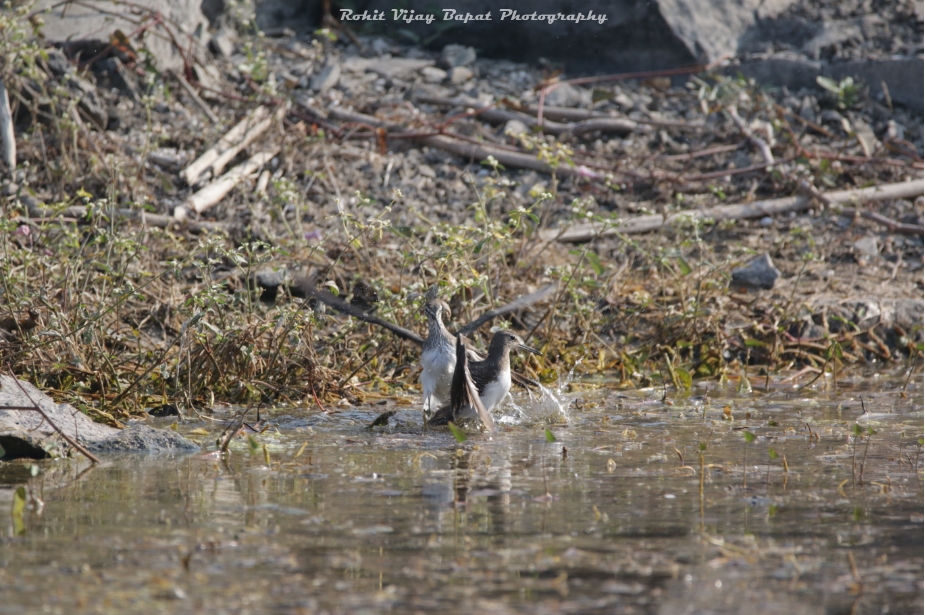
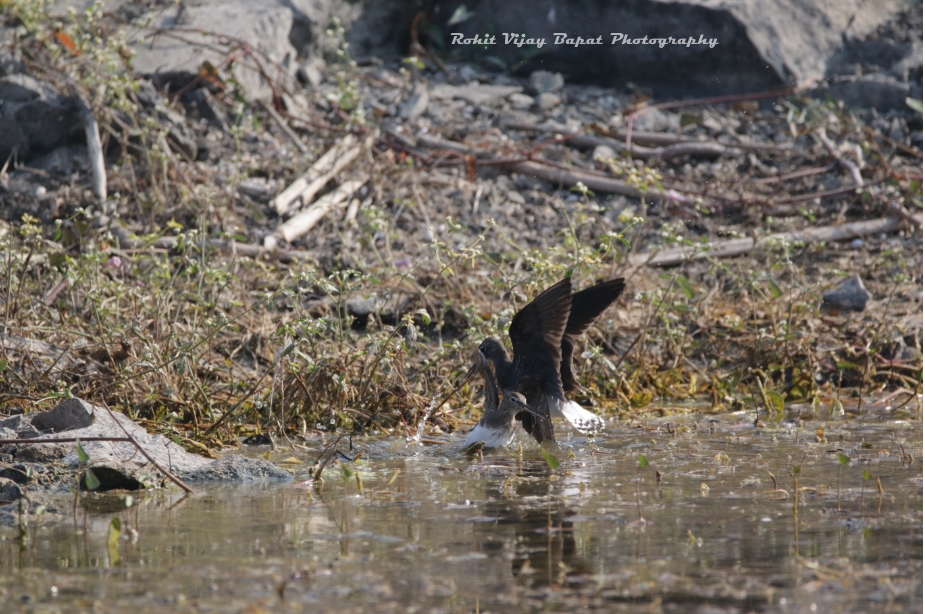
After this scene, I thought this is it! And I started moving out of the quarry. But, ARAI Hill was not done yet. Just after taking a few steps I heard a Common Moorhen. I could not resist myself from taking at least a couple of photos of it. Honestly, I was a bit tired and thirsty. Moorhen was far away yet, I managed to take an ID standard photo.
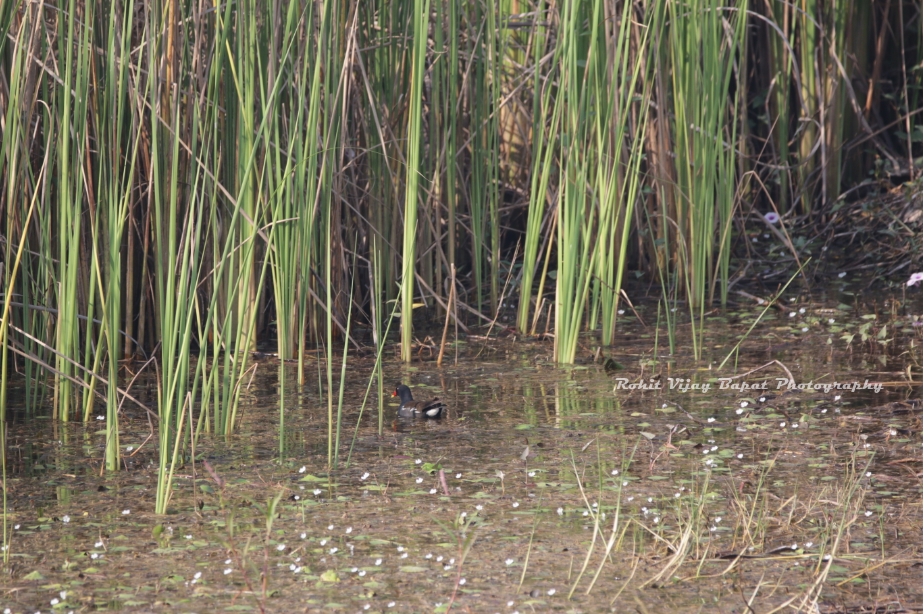
The sun was really hot at this moment, it was around 11 AM. Kites started making rounds in the sky which was extremely normal. Yet, there was a different kind of bird flying around. I could figure out that the feather pattern was very different. It was Oriental Honey Buzzard.
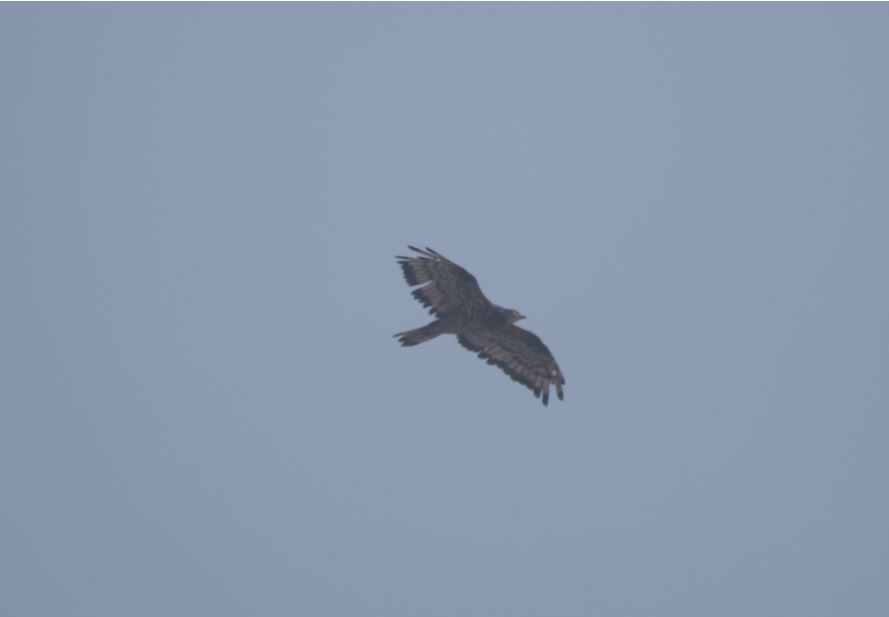
On the upper ridge, ARAI Hill according to an unwritten ritual a Peacock gave darshan.

It was the last photo of a bird I took that day. I sat down on the ridge on a rock. A cold breeze was like a heavenly experience. It was such a serene time that for a second I thought of taking a nap. But, then realized that I need to go home by now, it was 11:45 am by this time. So I took a selfie and put my camera in. It was pack-up!

It was the moment I said to myself “Please stop otherwise this place will keep giving and surprising .. !”
Fantastic! you got a fair amount of birds to watch, Bravo to your patience. We live in South India, in a city but the area has plenty of green forest cover. VERY lucky to see most of the birds, specially th ebeautifu Green Bee eater and Shrike ( Rufous Treepie??) around our area.
Lovely photographs!
Really it was awesome ….i too visited arai but reading ur experience took me over there once again …&ur photographs are also brillant…just loved ur experience